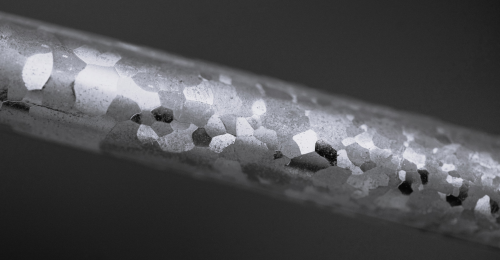A team of scientists from the Czech Academy of Sciences and Masaryk University, of which Prof. Mojmír Šob, emeritus scientist at the Institute of Physics of Materials, is also a member, has made a major contribution to research into the accumulation of impurities at the interface between crystals, a phenomenon having caused e.g. a series of accidents at nuclear power stations in the UK in the 1960s. The study, published in the prestigious journal Progress in Materials Science, furthers the development of more resistant alloys or new technological processes for their production.
The catastrophic failure of steel turbines in nuclear power plants is a manifestation of failed material cohesion. The destruction of the turbines in this case was not caused by problems in the actual operation of the nuclear power plant, but by the accumulation (segregation) of phosphorus at the interfaces between the metal crystals, the so-called grain boundaries.
Segregation of impurities has been studied by researchers around the world for decades, both experimentally and theoretically, and lately also using artificial intelligence. Yet experimental results and theoretical data rarely match. Czech scientists have now uncovered the nature of this puzzling discrepancy. A crucial role is played by entropy, which was previously often neglected in theoretical calculations
„The paper begins a new phase in the study of the segregation of impurities at grain boundaries in materials. My colleague and I have shown that the measured data cannot be well understood without including entropy and that entropy does matter. At the same time, I was able to predict a new type of segregation of impurities at grain boundaries that is completely controlled by entropy,“ explains Pavel Lejček from the Institute of Physics of the Czech Academy of Sciences.
Comprehensive knowledge of the behaviour of materials such as steels, including all types of grain boundary segregation, can significantly help not only the development of new materials resistant to intergranular embrittlement, but also the high-temperature stabilisation of highly promising nanocrystalline materials for structural purposes.
„The research initiates one of the important trends in this field, while being based entirely on the results of Czech science,“ emphasises Mojmír Šob from the Faculty of Science of Masaryk University.
Publication:
Entropy: A controversy between experiment and calculations in grain boundary segregation, Pavel Lejček, Mojmír Šob, Progress in Materials Science Volume 151, May 2025, 101431
doi.org/10.1016/j.pmatsci.2025.101431
News text taken from the press release of FZU, CAS.



